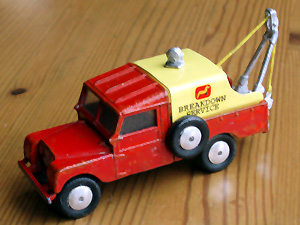I confess that creating a scenic model railway layout is of greater interest to me than running trains. Operation nowadays mostly occurs when my grand children are visiting! I do think I should run trains more often to make full use of my creations. One reason I do not is probably because the railway room is in a garage isolated from house and family. This got me thinking about a layout within one of the house rooms. However, that is not appropriate for current circumstances - unless it was a very small and unobtrusive layout.
An Inglenook layout may fit the bill because the track layout is only three sidings and a head shunt with the operating objective to make up a train of five from eight wagons that are randomly selected and added to the train in the order selected. It is a game that requires some thought of where to shunt wagons to select only those required to make up the train in the correct order.
An introduction to the Inglenook shunting puzzle concept and rules of the game.
Using short wheelbase wagons and a tank engine the layout can be contained within only 1.2m. I had ideas about making the layout scenic and formulated a vista in my mind. The more I thought about it though I realised that would be more about fulfilling my creative need and less the operating potential that I sought. What if I abandoned the scenic aspect altogether and even a baseboard; a return to childhood when train sets were set out on the floor. This would certainly focus my attention on running trains.
I went window shopping online with a view to buying a couple of PECO turnouts but when rooting through my cabinet drawers I rediscovered I had some vintage (1960s) Triang-Hornby Super 4 turnouts. These were missing the springs for holding the switch rails in place (I must have used them for another project). It was easy to make replacements from a broken steel guitar 'e' string. Simply a 'V' shape with legs bent at 90 degrees.I new I had a stock of Triang-Hornby Super 4 straight and curved track, buffer stops and uncoupling ramps. All set to go the track was laid loosely on top of a bookcase.
Smooth running of stock and loco is essential for a shunting layout. Sadly, modern rolling stock with their small narrow wheel flanges tended to derail through the turnout frog, which is designed for vintage coarse wheels. This was quickly remedied by sticking 0.2mm white card to the curved check rail.
Next problem was I only had three buffer stops but needed four. Thought I could live with that until I nearly shunted a wagon off the siding towards the floor! What I did have was a spare, broken Triang (1950s) buffer stop. The buffer beam was intact but the frame mostly missing. A new frame was designed and 3D printed and the vintage buffer beam attached.The random wagon selection aspect of the game was fulfilled by photographing each of the wagons and printing on photo paper that was then cut into playing card size. The pack is shuffled before laying out five cards. A static card (not shuffled) of the engine was used to indicate the front of the train.
So far I have played three games. I found it straight forward to shunt the wagons to select the five needed. However, I had a mind block and reversed the order of the five wagons relative to the engine. More shunting corrected the order. Great fun!
Each game does not last long. It is ideal to play when a short break from other activities is wanted or when just passing by the bookcase.
Note: 8 wagons give a total of 40,320 different combinations.
























